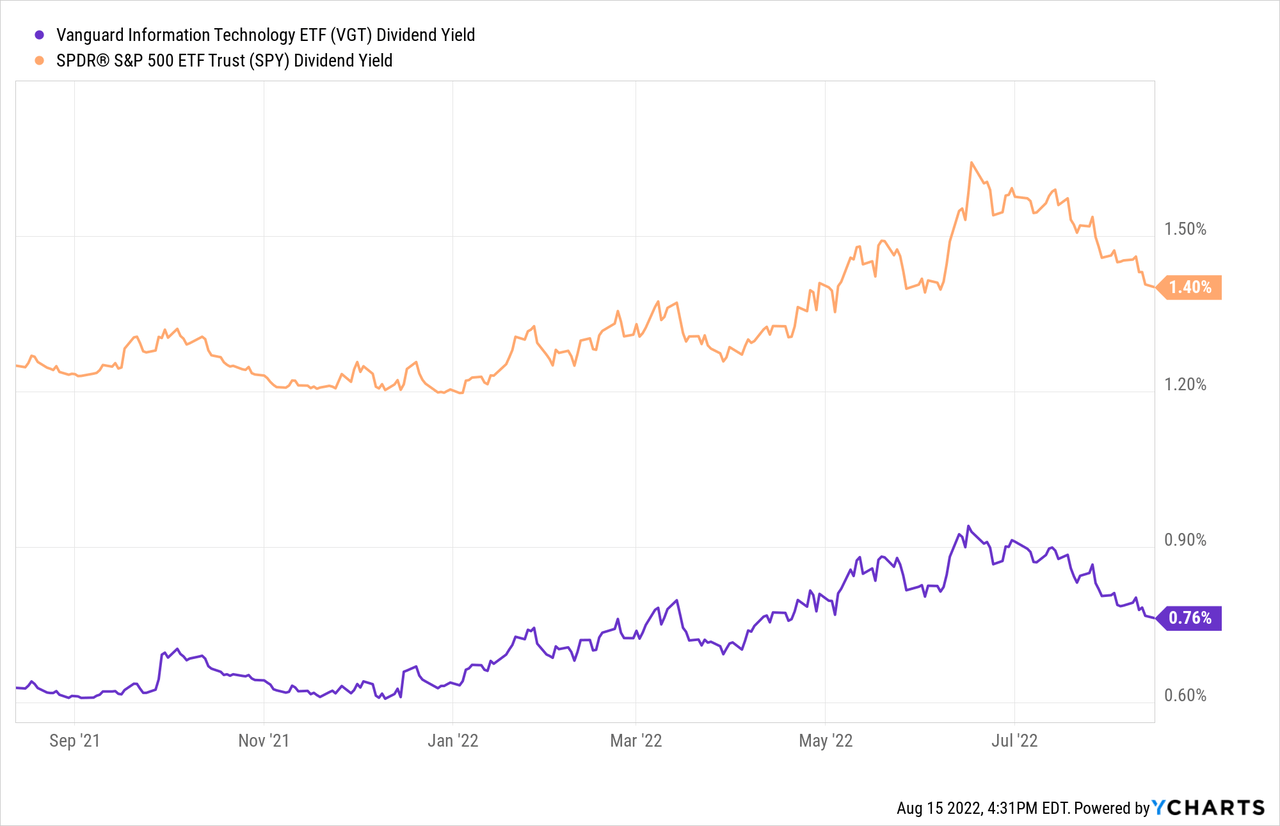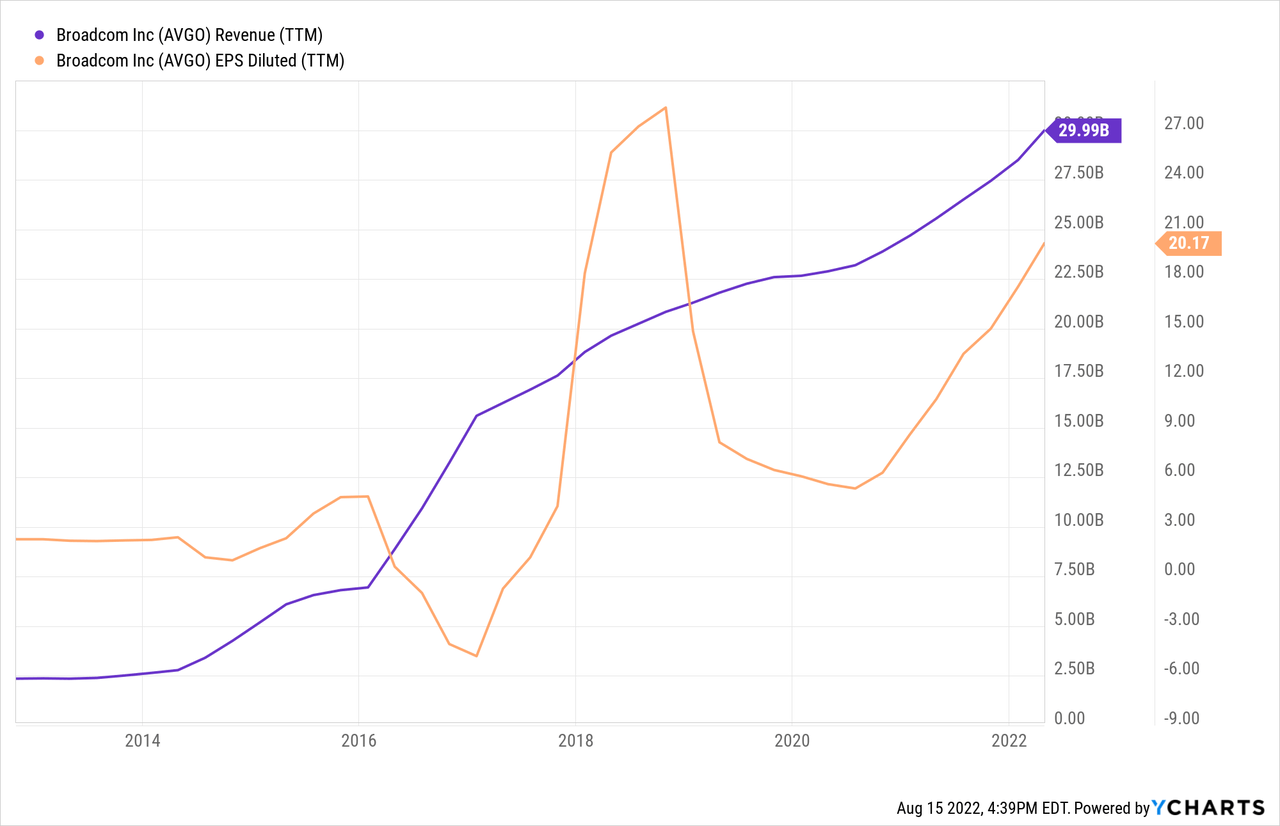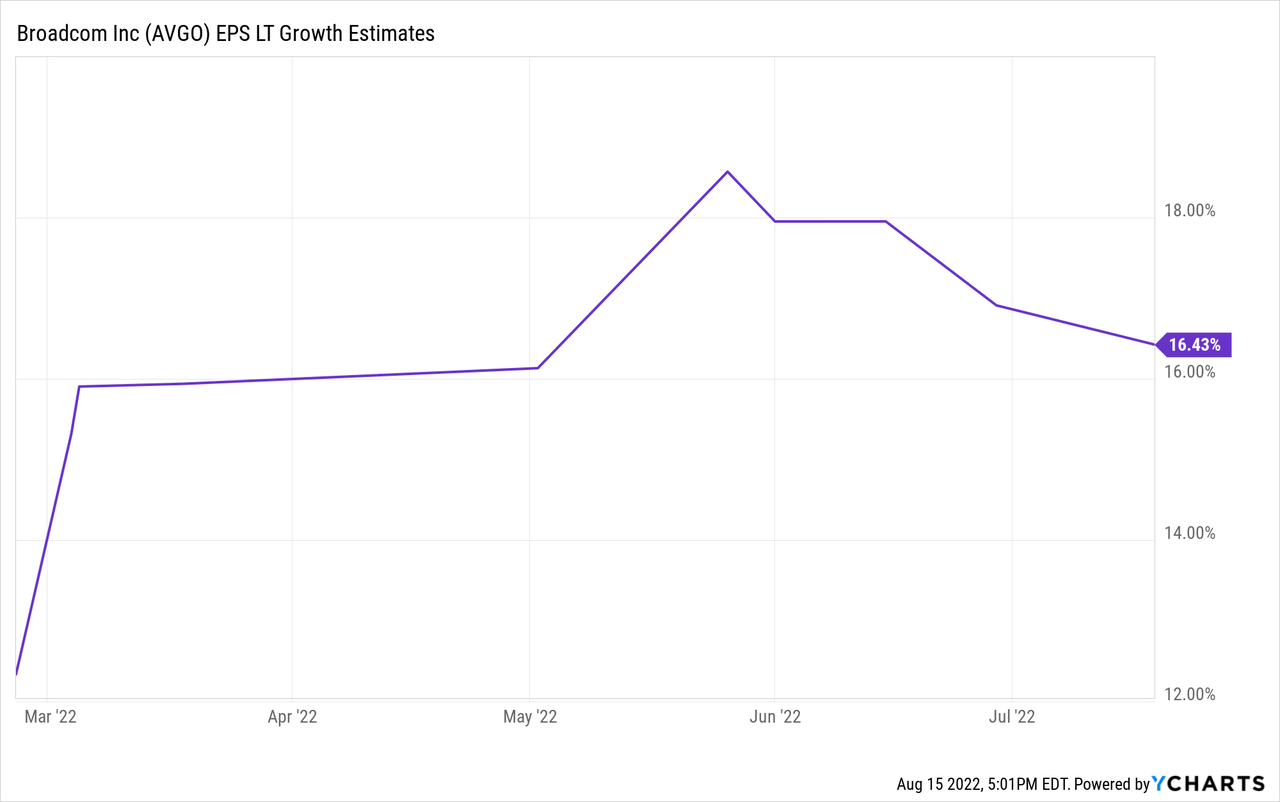
gesrey
Article Thesis
Tech stocks are oftentimes not great income investments, due to the fact that their high-growth nature means that they oftentimes reinvest the majority of their cash flows into the business. But nevertheless, some tech stocks offer solid income properties, including Broadcom (NASDAQ:AVGO), Texas Instruments (TXN), and QUALCOMM (QCOM). In this report, we’ll take a closer look at these three.
Why Tech Stocks Oftentimes Aren’t Great Income Investments
The tech industry is high-growth in nature, which means that companies have to reinvest a lot of money to maintain those high growth rates. At the same time, many companies in this space aren’t very mature yet, which means that many aren’t generating strong cash flows anyway. Last but not least, many tech companies trade at high valuations — all else equal, this leads to below-average income yields.
Even relatively mature and established companies in this space that generate hefty cash flows are often not offering any dividends, or only pretty small dividend yields, including Apple (AAPL), Amazon (AMZN), Alphabet (GOOG)(GOOGL), and Meta (META). The Vanguard Information Technology ETF (VGT) offers a dividend yield that is roughly half as high as that of the broad market/S&P500 (SPY):

And yet, despite the fact that the tech industry, overall, isn’t too interesting for income investors, there are some tech stocks that offer attractive income yields and/or hefty dividend growth.
1: Broadcom
The first one of these is Broadcom, a fabless chip company that has ventured into other areas such as software in recent years. Broadcom offers products such as a range of SoCs for consumer products and wireless LAN networks, switching and routing products, and many more. Broadcom is a company that is very M&A-focused, which has allowed it to grow at an enormous pace over the last couple of years:

Over the last decade, Broadcom’s revenue has grown by 1,200%, for an annualized growth rate of close to 30%. The acquisitions the company made in that time frame were partially financed via the issuance of new shares, which is why Broadcom’s share count has not remained stable over time. But even when we account for that, Broadcom’s earnings per share have risen 800% over the last ten years, or by around 25% per year. When a company is growing at that pace for a decade, it must be doing something right. Broadcom’s approach of growing via rapid inorganic expansion has been criticized by some, but the success proves them right, I believe. After all, investors can be quite happy with a growth rate this high, especially when it is combined with a high income yield and compelling dividend growth. That’s the case for Broadcom:

Seeking Alpha
The company’s current dividend yield is just shy of 3%, and the dividend growth rate was 35% over the last five years. That’s faster than the earnings per share growth rate in the same time frame, which was made possible by the fact that Broadcom has increased its payout ratio over time. Nevertheless, at 49%, the dividend payout ratio isn’t especially elevated. Broadcom actually has room to increase the payout ratio further if it wants to, especially since its fabless operating model means that capital expenditure requirements are very low compared to semiconductor companies that operate their own plants (such as Intel (INTC)). Over the last year, Broadcom has paid out $6.6 billion in dividends, while its free cash flows totaled slightly more than $14 billion over the same time frame, which results in a cash dividend payout ratio in the mid-40s, once again suggesting that the dividend is very sustainable, has a low risk of being cut, and has room to grow further over the coming years. Of course, dividend growth at 30%+ can’t be maintained forever, but that’s also not needed. Even a 10% dividend growth rate, coupled with a 3% starting yield, would make for a pretty compelling dividend growth investment.

Analysts are currently predicting that Broadcom will be able to grow its earnings per share by 16% annually in the long run. Between organic growth and accretive acquisitions, that might be possible, but I nevertheless believe that this estimate could be aggressive. But even if actual growth comes in just half as high as expected, at 8% or so, 10% annual dividend growth would be maintainable for a long period of time. The dividend payout ratio would rise to the mid-50s over the next decade, which would still be far from high. Thus even under somewhat pessimistic or conservative assumptions, Broadcom should be able to deliver compelling income growth in the next couple of years.
At the same time, Broadcom isn’t trading at an especially high valuation today. Right now, based on current EPS estimates for this year, Broadcom is valued at 15x net profits. That is a below-average valuation relative to how the broad market is trading, and that is the case despite Broadcom’s above-average track record and growth outlook. One could thus argue that there is considerable upside potential for Broadcom’s share price in the next couple of years, on top of the fact that Broadcom looks like a nice dividend growth pick.
2: Texas Instruments
Texas Instruments is a semiconductor company that is focused on analog chips for power management, converters, etc. On top of that, Texas Instruments also sells digital signal processing equipment primarily used for industrial and automotive purposes. Texas Instruments has managed to grow its dividend for 16 years in a row, i.e. throughout the Great Recession. Compared to many other semiconductor companies, its earnings and cash flows have been relatively resilient during past downturns, which can be explained by the fact that its products aren’t commoditized, but rather specialized for certain niches. This allows Texas Instruments to generate very strong margins, which protects its profitability during recessions or other macro crises.
Texas Instruments currently offers a dividend yield of 2.5%, which is relatively in line with the historic average. The company has raised its dividend by 18% a year over the last five years. With a dividend payout ratio in the high 40s and with forecasted longer-term earnings per share growth in the 10% range (current analyst consensus estimate according to YCharts), it is very likely that Texas Instruments will continue to offer sizeable dividend increases, although a slowdown versus the 16% historic average seems likely. Even half that rate would make for a very solid dividend growth investment, however.
Unlike Broadcom, Texas Instruments has not been M&A-focused at all. Instead, the company chose to drive shareholder value by putting a lot of effort into reducing its share count. Since its outstanding shares have dropped by half since 2005, which means that earnings per share have doubled in that time frame from buybacks alone, its approach has been quite successful, although its historic earnings per share growth is not quite as elevated as that of Broadcom. Still, Texas Instruments looks like a quality pick, and at 19x this year’s expected net profit, Texas Instruments is not an overly expensive stock today. In fact, Texas Instruments is currently trading at a ~20% discount compared to how it was valued, on average, over the last five years.
3: QUALCOMM
QUALCOMM is the third tech company in this article that we’ll look at. Its dividend yield is lower than that of Broadcom and Texas Instruments, but its 2.0% dividend yield is nevertheless higher than what one can get from the broad market today.
QUALCOMM is primarily active in 3G/4G/5G chips and related technology and services, while the company also generates a significant amount of money by licensing its vast intellectual property to other companies. QUALCOMM is, on top of that, expanding into smaller but fast-growing markets, such as autonomous driving chips — due to the expected market growth in this area, this segment has a compelling longer-term outlook, even though it isn’t generating a lot of money yet.
QUALCOMM has not raised its dividend at a pace as high as Texas Instruments or Broadcom in the past, but the company nevertheless has hiked its dividend for an attractive 18 years in a row. Thanks to the strong forecasted earnings per share growth of 23%, there is a lot of potential for QUALCOMM to raise its dividend if management wants to do so. The relatively low dividend payout ratio in the mid-20s further increases QUALCOMM’s dividend growth potential. With the highest expected earnings per share growth rate and the lowest dividend payout ratio, QUALCOMM could raise its dividend at the fastest pace among the three companies in this article. There is, however, no guarantee that management wants to do so, as the most recent dividend raise of 10% wasn’t especially aggressive. QUALCOMM may focus on other things instead of ramping up its dividend very fast.
But since shares are trading at just 12x this year’s earnings, while there is a lot of earnings growth potential for QCOM, shares could also deliver substantial price gains.
Takeaway
The tech industry isn’t where most income investors are looking for dividends. And in many cases, that makes sense, as most tech companies are either not paying any dividends at all, or only pretty low ones.
But I believe the three companies from this article are worthy of a closer look as they combine above-average income yields, ample dividend growth potential, and share price appreciation potential on top of that. Please feel free to share your favorite picks in the comment section!


Be the first to comment